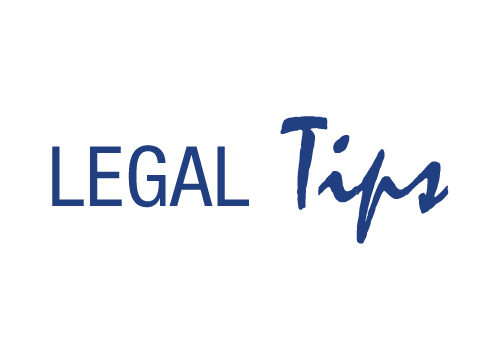One of the most highly charged issues at the Codex Committee on Residues of Veterinary Drugs in Foods (CCRVDF), held during the last week of April in San Jose, Costa Rica, was the attempt to adopt a Maximum Residue Limit (MRL) for recombinant bovine growth hormone (rBGH), otherwise known as recombinant bovine somatotropin (rbST), which, for a very long time, has been waiting in the wings at a final Step 8 for its adoption by the Codex Alimentarius Commission.
Editor’s Note: This article is intended for information purposes only. Because state and municipal laws vary greatly, as do the circumstances of individual cases, readers are advised to contact an attorney for specific legal advice. © Scott C. Tips 2015
Dr. Steven Vaughn is the chairman of the Codex Committee on Residues of Veterinary Drugs in Foods (CCRVDF), which met during the last week of April in San Jose, Costa Rica. When one looks up the word “fairness” in the dictionary, one sees Dr. Vaughn’s face as an example. I was repeatedly impressed by how even-handedly he treated both sides of very contentious issues, never favoring one party or another no matter what his own personal views on the topics might be. One of those highly charged issues was the attempt to adopt a Maximum Residue Limit (MRL) for recombinant bovine growth hormone (rBGH), otherwise known as recombinant bovine somatotropin (rbST), which, for a very long time, has been waiting in the wings at a final Step 8 for its adoption by the Codex Alimentarius Commission. Certain proud parents in the audience, most notably the United States and Brazil, are palpably anxious to push their little daughter onto the stage of world trade so she can start generating the big bucks of which they dream.
This might seem like nothing more than bureaucratese, but obtaining an MRL at Codex for rbST is the marketing equivalent of any one of us being handed the “Keys to the City.” It is a license to sell rbST throughout the Codex member-state world, with World Trade Organization (WTO) sanction power behind it, and woe be it unto anyone who opposes its sale within their national boundaries. Many Codex members and member states—such as the European Union, Norway, Switzerland, India and China—have banned this genetically modified vet drug’s use on animals under a very sensible health policy that prohibits drug use on animals for anything other than therapeutic purposes. The vet drug rbST, injected into cows, is not therapeutic; it is used to increase milk production in cows. The Europeans and many others do not want to see this drug injected into their cows, which injections lead to documented health problems and dangers for both animals and humans.
And For What Purpose?
Recombinant Bovine Growth Hormone increases milk production in cows. But for what purpose? Consumers don’t need it, since there is already a surplus of milk on the market. In fact, the U.S. government has had a long-standing program of dairy price supports in place that routinely removes surplus dairy products from the marketplace so as to artificially prop up dairy prices.
This government program, as with so many other government programs, is based upon the absolutely false economic premise that the free market cannot deliver “fair and reasonable” prices. Indeed, the free market is the only way to deliver reasonable prices. Just look at current dairy policies, which do not deliver “reasonable” prices by any measure. Millions of families are hurt financially by U.S. government dairy controls that drive milk prices higher than free-market prices. The Organization for Economic Cooperation and Development studied this issue and determined that American dairy policies impose a 26% “implicit tax” on milk consumers,1 which typically costs low-income families more as a percentage of their disposable income. In its turn, the congressional watchdog Government Accountability Office (GAO) compared American dairy prices to world prices and found that U.S. prices for butter averaged twice the world price, with cheese and nonfat dry milk prices about 50% and 30% higher, respectively. 2
Mike Ewall, in his excellent article “Bovine Growth Hormone: Milk does nobody good,”3 observes that rbST “benefits no one but Monsanto [the drug’s maker]. FDA even admits that there will be no benefit to consumers. Consumers Union predicts that rBGH will cost the taxpayer an additional $200 million in surplus milk that the government (your taxes) will buy up to keep the milk prices stable. This is in a nation where we’ve spent an average of $2.1 billion each year from 1980 to 1985 buying surplus milk. During 1986-87, the government paid farmers to kill their cows and stop dairy farming for 5 years. Some 14,000 farmers participated in this voluntary program, slaughtering a total of 1.55 million milk cows. Although we still have a glut of milk and agribusiness does everything they can to stress out the dairy herds, forcing them to produce more milk per cow, Monsanto sees a need to profit from a needless experiment on the public (it wasn’t subject [to] the proper legally-required testing before release for use on the general public’s milk supply).” So, if anything, rbST is—once again—about making more money at the expense of animal and human health.
It Harms Us and Our Animals
Mastitis is an udder infection that afflicts many dairy cattle around the world. Interestingly, a survey of major milk-producing countries shows that mastitis is found in 15–20% of cows, while in the United States the infection rate is closer to 50%.4 This difference is not surprising when one considers that the United States has been using rbST injected into cows since the drug’s approval in the 1990s. Reviewing the trial data on rbST, scientist Dr. Michael Hansen concluded that mastitis was 3.5 times higher among the treated herd than the untreated one. 5 It seems that whenever milk production is artificially forced, the cows are more susceptible to mastitis. As Dr. Hansen testified at the time, “We do not see how FDA can say a drug that causes disease is safe.”6
Mastitis increases the amount of pus and bacteria that ends up in the cow’s milk. Mr. Ewall educates us again when he writes, “Monsanto’s own data shows that there is a 79% increase in mastitis (udder infections) and a resulting 19% increase in somatic cell counts (pus & bacteria in the milk). In fact, the warning label on Monsanto’s Posilac drug (their brand name for rBGH) explicitly states: ‘Cows injected with POSILAC are at an increased risk for clinical mastitis (visibly abnormal milk). The number of cows affected with clinical mastitis and the number of cases per cow may increase...In some herds, use of POSILAC has been associated with increases in somatic cell counts [pus & bacteria].’ The warning label goes on to say ‘use of POSILAC may result in an increase in digestive disorders such as indigestion, bloat, and diarrhea...Studies indicated that cows injected with POSILAC had increased numbers of enlarged hocks and lesions (e.g., lacerations, enlargements, calluses) of the knee...and...of the foot region.’”7
To prevent economic losses from the increased pus and bacteria in their dairy products (which would cause their milk to be rejected), the majority of farmers medicate their cows with antibiotics. However, using antibiotics is not an ideal solution. Antibiotics not only must be carefully employed so as to not excessively contaminate the milk with residues or kill off the good bacilli necessary for yogurt and cheese making. Curiously, enough it has been reported that antibiotics have not reduced the incidence of mastitis in cows.8 Evidently, in the case of mastitis caused by coliform bacteria and Staphylococcus aureus, antibiotic resistance and ineffectiveness are genuine concerns.9
Another concern with rbST use is its cancer risk.10 The veterinary drug increases the production of the hormone Insulin-Like Growth Factor-1 (IGF-1), which in turn increases the production of milk. IGF-1 naturally occurs in both animals and humans; however, the hormone is unbound to protein in cow’s milk, whereas in mature humans, it is usually bound with a protein and therefore not a cancer risk. Anyone drinking cow’s milk with high levels of unbound IGF-1 is, according to some sources, encountering a significant health risk.11 Even Monsanto has admitted that IGF-1 levels in rbST-treated cow’s milk is higher than in untreated cow’s milk.12
The Codex Saga
In parallel with Monsanto’s push for rbST regulatory approval by various countries’ food-and-drug regulatory agencies, industry and the U.S. Food and Drug Administration (FDA) were pushing for recognition of the vet drug by the Codex Alimentarius Commission. Dr. Hansen was, again, one of those at the forefront arguing against the establishment of MRLs. The European Union and many other countries also strongly opposed any MRL adoption. Nevertheless, based in large part upon the drug’s “scientific” seal of approval given it by the FAO/WHO Joint Expert Committee on Food Additives (JECFA)—which is worshipped with unquestioning adulation by most Codex delegates—the drug has worked its way up to the final Step 8 of the adoption process, where, after more than a decade in limbo, it balances now on razor’s edge awaiting the final stamp of approval by the Codex Alimentarius Commission (CAC) itself.
That is where the CCRVDF was playing its role the last week of April 2015. It had been asked by the parent body (CAC) to reevaluate rbST and then report to CAC in time for its July 2015 meeting in Geneva. After much significant debate among the delegates, with the Europeans, India, China and the National Health Federation (NHF) arrayed on the side opposing rbST and the United States, Mexico, Brazil, Australia, New Zealand and others supporting rbST, the CCRVDF Chairman had his hands full balancing the opposing views and emotions. The EU’s Codex Office deserves much praise for its determined and intelligent opposition to establishing any Codex MRLs for rbST. I know all of these people personally and their hearts and souls are truly into this fight, it’s not just for show or simply a 9–5 job. But if not for them, rbST dairy products would have flooded Europe’s and other markets long ago. They are heroes.
I Challenge JECFA Science
Still, it is now an uphill battle, because in large part JECFA keeps insisting to the Codex delegates that

|
|
| Waiting to speak in Costa Rica. |
its many safety reviews of rbST have shown the drug to be safe, with no noticed increase in mastitis or antimicrobial residues from rbST use. Angelika Tritscher, speaking on behalf of JECFA at this meeting of 250 delegates, even went so far as to say that JECFA’s “systematic review of the literature published since the 50th JECFA [1998] did not find any significant difference in the incidence of mastitis … [nor] specific studies correlating the use of rbST with the development of antimicrobial resistance.”13
Fortunately, the Chairman called upon me to speak on behalf of NHF immediately after this JECFA comment and I simply asked the JECFA representative, “Why then after such a thorough and systematic literature review did JECFA miss the industry’s own data showing a 79% increase in mastitis from rbST use along with a 19% increase in pus and bacteria in the milk?” I then read from Monsanto’s own warning label for Posilac, its rbST injectable drug, expressly stating that cows injected with Posilac are at increased risk for mastitis. I again asked the Committee, how could JECFA’s supposedly systematic review have missed the industry’s own safety issues?
There was no answer because there is no answer. The JECFA science on rbST is every bit as suspect as that presented to and by FDA. Canada’s counterpart to the U.S. FDA is Health Canada and Health Canada turned down approval of the drug based upon strong safety concerns arising from its use, particularly after Monsanto reportedly tried to bribe Canadian officials there in order to speed up approval.14 Considering that Monsanto also tries to suppress any American product label claims of being “rbST free” and worked to suppress the publication of British scientific study results showing safety issues arising from rbST’s use, it makes the thinking person wonder whether or not Monsanto and its American government “enforcers” have gotten to JECFA. After all, JECFA is so smugly self-confident about rbST’s safety even despite the EU’s and others’ evidence to the contrary. If Monsanto tried to influence Canadian officials, then who is to say that the same card was not played with JECFA?
Science at Codex is no different than science elsewhere—it is politics above facts. As with statistics, you can make science say whatever you want. And far too often, the loudest voices and the deepest pockets prevail. I try to counter that by speaking just as loudly, just as often and even more directly at these meetings. But it comes with a cost. The U.S. Codex office publicly calls NHF “conspiracy theorists” and in a petty fit tries at Codex meetings to get NHF’s name removed from the Final Report. Fortunately, fair chairmen and -women, such as Dr. Vaughn, recognize those tactics for what they are and easily slap them aside. Other delegates tried to twist my words so that they are not accurately reported in the Report. Those, too, were quickly swept aside. But the efforts to silence or disparage our contrary voices continue.
In the end, and just days before the re-eruption of Costa Rica’s Turrialba volcano adjacent to San Jose, the Chairman’s Solomonic decision on the contentious rbST was to let the record reflect everyone’s opinions, including those expressed by me, and to refer the matter as undecided to the Codex Alimentarius Commission. The Commission will address the issue again this July in Geneva and I will  be there. WF
be there. WF
A graduate of the University of California at Berkeley Law School, Scott C. Tips currently practices internationally, emphasizing Food-and-Drug law, business law and business litigation, trade practice, and international corporate formation and management. He has been involved in the nutrition field for more than three decades and may be reached at (415) 244-1813 or by e-mail at scott@rivieramail.com.
End Notes
1. Organization for Economic Cooperation and Development, “Agricultural Policies in OECD Countries: Monitoring and Evaluation,” 2005, p. 294.
2. Government Accountability Office, “Dairy Industry: Information on Milk Prices, Factors Affecting Prices, and Dairy Policy Options,” GAO-05-50, December 29, 2004, p. 106.
3. M. Ewall, “Bovine Growth Hormone: Milk does nobody good …,” undated, at www.ejnet.org/bgh/nogood.html.
4. A. Phelps, “Survey shows global extent of mastitis incidence costs,” Feedstuffs, 61(41):11 (1989).
5. M. Thom, “rBGH, Monsanto and Corporate Agriculture Information About Intellectual Property Rights,” Institute for Agriculture and Trade Policy, August 1994, at http://www.iatp.org/files/258_2_78307.htm.
6. Ibid.
7. Ewall, supra.
8. W.N. Philpot and F.H. Dodd, Mastitis (1978), Chapter 23 In Wilcox, C.J. et al.. 1978, “Large dairy herd management,” University of Florida, Gainesville, FL. 1046 pages, fn A.
9. A.W. Hill, “Mastitis, the non-antibiotic approach to control,” Journal of Applied Bacteriology Symposium Supplement, 1986: 93S-103S.
10. J. Smith, “In-depth Look at rbGH,” Institute for Responsible Technology, 6 April 2009, at www.responsibletechnology.org/gmo-dangers/gm-hormones-in-dairy/In-depth-Look-at-rbgh.
11. See, e.g., Chan JM, et al., “Plasma Insulin-Like Growth Factor-I and Prostate Cancer Risk: A Prospective Study,” Science, 23 January 1998: Vol. 279, No. 5350, pp. 563-566. DOI: 10.1126/science.279.5350.563; Hankinson SE, et al., “Circulating concentrations of insulin-like growth factor 1 and risk of breast cancer,” The Lancet, Vol. 351, No. 9113, p. 1393-1396, 9 May 1998, at www.thelancet.com/journals/lancet/article/PIIS0140-6736(97)10384-1/abstract.
12. P. Kingsnorth, “Bovine Growth Hormones.” The Ecologist, Vol 28, No. 5, Sept/Oct. 1998.
13. Final Report of CCRVDF Meeting, San Jose, Costa Rica, April 27-May 1, 2015, at Par. 39. See also, Bauman DE & Collier RJ, “An Update on rbST – Human Safety and Animal Efficiency and Welfare,” Cornell and University of Arizona, undated but believed to be 2014, at https://ecommons.library.cornell.edu/bitstream/1813/37969/1/CNC2014_4_Collier.pdf. (But note that RJ Collier is Monsanto’s dairy research director).
14. J. Smith, supra.
Published in WholeFoods Magazine, June 2015










